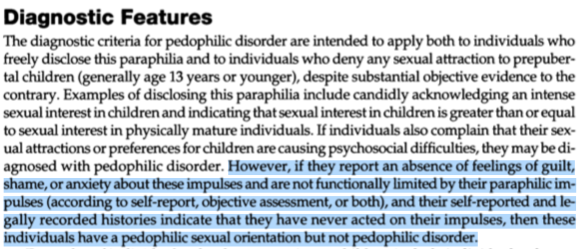
Minor attraction is an orientation. It is a hardwired attraction, usually discovered around puberty, just like other orientations such as heterosexuality and homosexuality. Many mental health professionals have called minor attraction an orientation. The DSM-5 states that if the subject doesn’t act illegally on their sexual feelings for minors, and is not distressed by those feelings, it is an orientation rather than a disorder.

